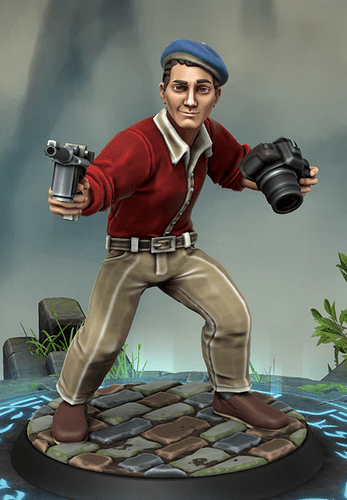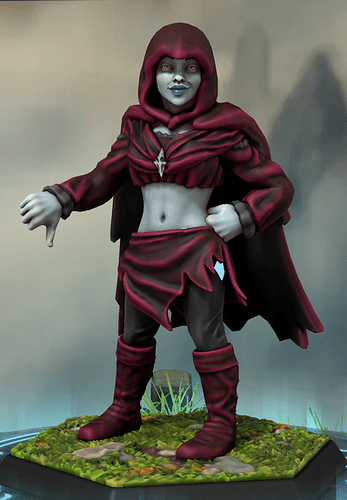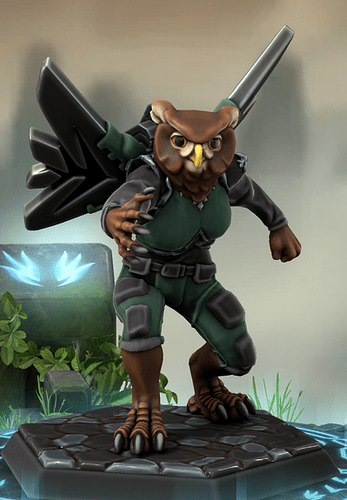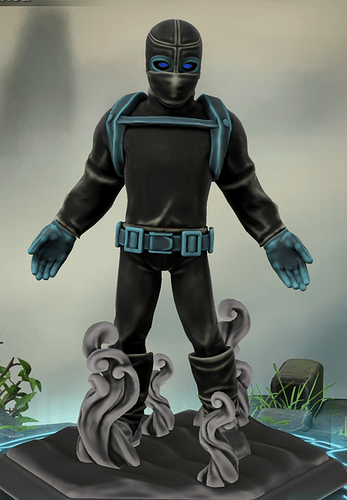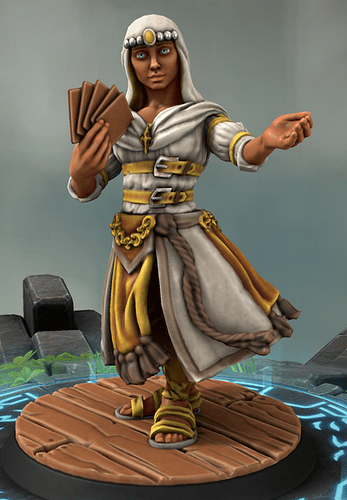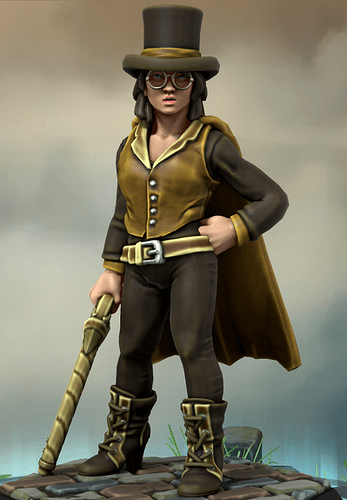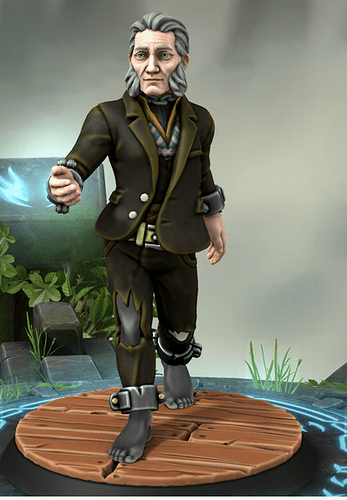Jacob Marley
First Appearance: Campfire Terrors #106, December 1947
Lieutenant Type: Ally
Die Size: d8
Relation: Mentor Figure, Approach: Otherworldly
Traits:
- The Moment: When Jacob Marley Boosts or Hinders, he may set the result to a 12. If he does, remove him from the scene.
- Apparition: Jacob Marley cannot Attack or Defend and is immune to physical damage.
As the overall popularity of superheroes began to wane in the postwar period, the editors of Venture’s less superhero-focused titles re-asserted their independence, finding ways to move their comics a bit further away from a fading market and back to their traditional stomping grounds. Campfire Terrors did this with a new narrative framing mechanic, one that started as a one-off story but evolved to encompass the entire comic within a year.
In December 1947, the comic took a well-worn path with their own version of A Christmas Carol, featuring a corrupt businessman facing ghosts from his own past that terrorized him into recognizing the harm that he’d caused. The story itself would have unremarkable, except for the fact that it was narrated by Jacob Marley himself, stepping in between ghosts and giving background material to the readers when he wasn’t interfering in the tale to push the businessman towards a reckoning with his own flaws.
The unusual blend of narration and interaction caught the eye of readers, and the issue was a smash hit. On a whim, the new editor of Campfire Terrors, Jonas Birch, decided to toss another story up in February with the same theme – Jacob Marley appearing to speak to the readers on the cover of a tale of reckless teenagers disturbing an ancient vampire. Marley manifested within the story as well, giving advice to the teens that ultimately helped them win the day, and in the conclusion of the tale he suggested that you should listen to the voice telling you to be cautious, or you might not be so lucky.
Soon, Marley was the primary narrator of Cryptic Trails, even introducing those stories featuring superheroes like the Penitent or the Midnight Rider. He would lay out the situation to his readers, and narration boxes were written in his voice – and occasionally, he would slip into the narrative itself to provide a word of advice or a grim warning. These interjections were not always successful, but they often proved valuable in a critical moment.
The most notable of these interjections came in a 1951 story in which the Penitent was facing off against the Cult of Urak. As he wrestled with a cultist, the ritual tool he needed to close the portal was knocked out of his hand, and Marley reached out of his narration to toss it back to him. Afterwards, the Penitent offered a “Thank you, Jacob,” and Marley gave him a “You’re Welcome” from within the narration boxes themselves. This led to a few playful interactions in which the Penitent would argue with or contradict Marley’s narration – the only times in the Golden Age that a hero openly broke the fourth wall.
Behind the Scenes:
So, full disclosure: I did not do any randomizers for this one. I knew exactly who and what I wanted as the last Golden Age ally: a fourth-wall breaking ghost narrator who exists to help the story instead of interfering to make things worse. My only regret is that Hero Forge does not currently have any “large chains across the chest” option. I spent some time noodling with the chain spell effect, but couldn’t get it to look functional so I guess he’s been able to get them off by being good.
As it happened, this year we watched What If? season three at the same time as the Will Ferrell / Ryan Reynolds movie Spirited, and the combination of the interfering Watcher and the ghost redeemers combined in my head. Initially I was thinking of having Scrooge himself, but Jacob Marley is a slightly deeper cut, and one that doesn’t get overused to the same degree. He’s usually a pretty small part of any given Christmas Carol adaptation, and I loved the idea of turning him into Venture’s version of Grimm or the Crypt-Keeper. From there, the idea that he is the narration boxes, and occasionally steps out to fix a story with a single meaningful adjustment.
I’ll be inserting notes in the book, but I believe that Marley vanishes with the end of Campfire Terrors and is gone throughout the Silver Age; when Venture starts their Christmas Annuals in the 70s someone digs him up to act as narrator for all of them, and he’s popular enough that he makes it into Dark Rivers as a supporting character as well as acting as narrator for a lot of annuals and one-shots in the Bronze and Iron Ages. From there, he’s just kind of around periodically, supporting different mystical heroes and narrating various comics.
